
It Goes On The Shelf
Published at The Sign of the Purple Mouth by Ned Brooks
Web Hosting Domain | Free Website | WebSite Hosting | |

Cover art by Brad Foster (who won the fan-art Hugo this year!)
This art is copyright by Brad Foster and may
be obtained from him as a large signed-and-numbered print.
Interior art by Chuck Ermatinger, Hannes Bok, Edd Cartier, Julia McCune Flory, and James
Callot
Inside back cover map by Dave Hall from The Night Land
Back cover by James Callot
It's April 24 as I start typing this issue. I was reading the May issue of Liberty and came across a speculation that Ayn Rand had plagiarized Atlas Shrugged (1957) from an obscure novelist with the odd name of Garet Garrett, who had published a similar tale in 1922 called The Driver. The name Garet Garrett seemed oddly familiar, and sure enough I found that I long ago bought a book of his for a quarter:
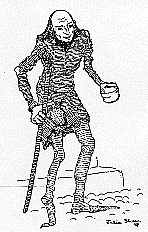
Harangue by Garet Garrett, E P Dutton, New York, 1927, 258pp, $2.
This is an odd sort of novel - there are only three chapters, and the language is rather
exotic (probably why I bought it - certainly not for the hideous art deco d/w). The
subtitle is also strange - `The trees said to the bramble come reign over us'.
There is a quote from Bernard Baruch's favorable review of The Driver in the front
opposite the title page, so I suppose Garrett was well-known in some circles at
the time.
I have not read all of Harangue - it's rather tedious - but like Rand's books it's what might be called `political sf'. The characters are shallow (if bizarre, with curiously unlikely names) and the emphasis is all on libertarian ideas.
The Grand Buffalo by William Garrett, Appleton, New York, 1926, 147pp,
illustrated in color & b&w by Mary Stella Edwards, $2.50.
This was on the shelf next to the previous, and has a much more attractive d/w - the
b&w art is rather like the Julia Flory McCune art borrowed for It Goes On
The Shelf 12. There are also three color plates, but I prefer the b&w -
though the one opposite p.66 of a walrus book-dealer with an ear-trumpet is not
bad. This seems to be a juvenile fantasy much in the line of Alice. Like
the previous book it has an attractive cloth binding in spite of what seems
today a very low price.
Arcimboldo The Marvelous by Andre Pieyre de Mandiargues, Abrams, New
York, 1977, 128pp, color plates.
This was translated from the French and printed and bound in Switzerland - the binding
spine says `Arcimboldo Mirus'. The price is not given on the d/w - I got it in a thrift
store as a curiosity. Arcimboldo was a 16th-century Italian artist who painted people made
up entirely of fruits and vegetable matter or animals - an odd conceit. The book is also
unusual in that it is printed on a black coated paper. I don't know that I care
for people made of fruit... The rather sparse text - it's printed in 18-point -
does not explain anything except that Arcimboldo seems to have gotten the idea
from Da Vinci. I see that he also did a librarian with a face made up of books;
but his own self-portrait is quite conventional.
Michael Moorcock: Death Is No Obstacle by Colin Greenland, Savoy (279
Deansgate), Manchester (U.K.), 1992, 146pp, illus., 14.95.
The price is in pounds, and the letter accompanying this review copy does not mention what
the dollar price is, but does give a US distributor - A K Press, Box 40682, San
Francisco CA 94140.
Aside from the excellent introduction by Angela Carter, the entire book is in the form of an interview of Moorcock by Greenland on the details of how and why Moorcock has written such a variety of material, from comics in the 1960s through the Elric, Jerry Cornelius, von Bek and the enormous Mother London - Moorcock admits at one point that he has a weakness for `too much text'! The illustrations are all of book covers, except for one of Moorcock himself on the set of the dramatization of The Final Progamme. If you plan to be a fantasy writer you should get this - Moorcock explains how to do it and what it is like, for him at any rate.
ReverbStorm (V.1 No.8) by David Britton, art by John Coulthart, Savoy,
Manchester, 1994, 56pp, A4 wraps, 3.50.
This graphic novel, like the preceding item, was sent to me by the editor, Michael
Butterworth. A4 is a British paper size, 11.5 inches high and again, the price is in
pounds.
Very much modern multimedia horror art - collages, painting, drawing, photos, lists of rock albums, well reproduced on quality coated stock. The protagonist Lord Horror can hardly be called a hero! But the impact of the story seems to depend on the `evilness' of Lord Horror, which implies that the reader must have some standard of good - else how could he tell that Lord Horror is evil?
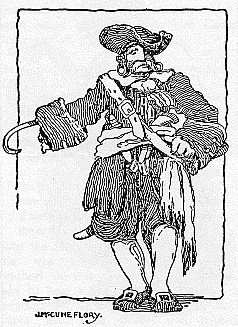
There is a CD, also titled ReverbStorm, with the book (but I don't know if it is included in the price), and I rather expected it to consist of the sort of rock music that seems to me (as a non-fan who can't take anything noisier than the early Pogues) to consist of screaming and guitar crescendos - but no, the music is quite mild and pleasant.
Last issue's review of the George Hay Necronomicon mentioned that there was to be a sequel called The R'Lyeh Text. I have since learned that this book was in preparation in May and to be published in August, so there may be a review of it further on. My letter asking about it brought back a long letter from the Skoob Books editor Christopher Johnson, who notes that it is to be typeset and printed in Malaysia, and a copy of their catalog. The US distributor is Inland Book Co., Box 120261, East Haven CT 06512. A later June note promises it for September...
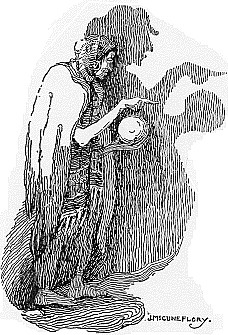
Johnson also mentioned their index to the used-book stores of the British Isles, but said it is not being distributed in the US - I told him that quite a few book-nuts go to England, and probably even more next year for the Glasgow worldcon.
Smile or Die by J Shafer, Peasant Books (Box 52745), Bellevue (WA 98015),
1994, 258pp, wraps, $11.
An interesting attempt to get inside the mind of a 12-year-old psychotic. The artwork is
atrocious. It does not seem to me that I was that calculating at the age of 12, but of
course I was somewhat closer to normal than Wallace Biggs. Reads well, moves right
along.
My Occult Diary by Cornelius Tabori, Living Books, New York, 1966,
251pp, illus. photos, index, $5.75.
Paul Tabori (mentioned last issue as the author of The Natural Science of
Stupidity) translated and edited this diary kept by his father (murdered by the Nazis
in 1944) from 1906 until 1942. The photos are of people active in spiritualism in Europe
during that time - the only one I ever heard of is Thomas Mann.
This book might better have been called an `anti-occult' diary - the author was interested in the occult mainly as a criminologist and is quite skeptical. And yet occasionally he is impressed by the prophets and mediums. I am not sure what to make of the error on the first page - a recipe for a supposedly miraculous potion is said to be nothing but water, and yet the first ingredient is `aqua fortis 68%'! According to my old Webster's Collegiate, aqua fortis is nitric acid - I suspect a 68% solution would be quite dangerous to swallow much of.
The National Directory of Haunted Places by Dennis William Hauck, Athanor
Press (5550 Franklin `Bloulevard' 101), Sacramento (CA 95820-4742), 1994, 402pp,
illus. photos, bibliography, wraps, $24.95.
An enormous and, from what details I have knowledge of, rather sloppy compilation of
data for the ghost-hunter. Perhaps the editor, a Bruce Schaffenberger, is at fault - I
have been at Swannanoa and know that the sculptor and his wife who ran it for years
were named Russell, not `Russel'. There is one entry for Newport News,
but as they explain, it is actually in James City County, not in the city.
Shucks...
Chester Cuthbert writes that Kim Takeuchi replaced Greg Ketter as manager of the ConAdian dealer's room in April and that Takeuchi would respond to my queries about that operation - we will see.
The fans at Intersection, the Glasgow worldcon scheduled for 1995, were much more forthcoming than the ConAdians about the problems of a dealer bringing anything there from outside the UK - basically, for the small-scale amateur like myself, it isn't worth it. You have to pay customs and VAT on everything, whether you sell it or not - and sort out the various categories, and worry about what some ignorant twit will object to as `obscene'. I had no such problems in 1979, when I took a footlocker full of rare books and those I had published myself through Ireland to Liverpool and on to the worldcon in Brighton. No official showed the least interest in the heavy thing, and literary material was specifically exempt from Customs declarations. I sold some of it, filled the space with the stuff I bought there, and returned with no hassle.
A later letter from Caroline Mullan seems to contradict my interpretation of the Intersection Progress Reports - she says there is no customs duty on any printed matter in the U.K., and that books and magazines are `zero-rated' for VAT! They might have made that clearer, I think. Glasgow... I've never been to Glasgow... Nah... But see below...
Black Spirits and White by Ralph Adams Cram; Solarion by Edgar Fawcett; and Tourmalin's Time Cheques by F. Anstey are all fantasy books from before 1919 and the authors all more than 50 years deceased - thus the texts are in the public domain. Mark Owings (1113 West 40th Street, Baltimore MD 21211-1749) has reissued them on computer disk as ASCII files at $1.00 each plus $1.50 shipping per order - can't hardly find a better deal than that! These books take up something over 200K each on a floppy disk (5.25 or 3.5 size), and each disk includes an easy-to-use utility to read them with. Any DOS-based editor or word-processor will work as well, of course. I had no trouble reading them either way on this computer.
Mark plans to continue this effort with further titles - he mentions Fenimore Cooper's The Monikins, which I never heard of - I had no idea Cooper wrote any sf.
Steve Sneyd sends a recipe for making a Hand of Glory:
"It must be wrapped in a piece of shroud which must be drawn tight so that it shall
squeeze out any little blood that remains. It shall then be placed in an
earthenware jar containing saltpetre, salt and long peppers, all dried and
finely ground. Let it remain in the jar for two weeks, then take it out and
leave it in the sun until it is thoroughly dried. If there is no sun, dry it in
the smoke of a fire of vervaine and fern."
Note the final sentence - whoever wrote this was prepared for the English weather! In this version, the Hand was used to hold a candle for the purpose of keeping the residents of a house in a stupor while the house was robbed, rather than the actual fingers being lit as tapers. Steve notes that the north of England is full of such odd superstitions, and that an actual hand was found hidden on a high beam when an ancient Yorkshire cottage was renovated, and is in the Whitby Museum.
Steve promises to visit the National Postcard Museum and check up on the card that Guinness book of world records says sold 6 million copies - the one with the atrocious `kipple' pun. Steve also incloses a wonderful page by Vincent Clarke about strange books, including Samuel Richardson's The Exploits of Engelbrecht - Engelbrecht was a dwarf surrealist boxer. I find that I have one of the stories in The Bedside Lilliput, an anthology from that magazine.
The Normal: or, Methods of Teaching The Common Branches... etc. by
Alfred Holbrook, Barnes & Burr, New York, 1859, 456pp, illus.
Mr Holbrook, who was Principal at the Normal School in Lebanon Ohio, considered the
common branches of learning to be `orthoepy, orthography, grammar, geography,
arithmetic and elocution', and he was fully prepared to explain how to teach
them all, right down to extensive samples of classroom dialogue and provision
for some of the students not having a book - apparently the practice at the time
was for the students to have books with the teacher's questions in fine print
and the student's correct response in coarse print, so that they could chant
back and forth. This book was apparently intended for the use of both primary
and secondary school teachers - I wonder how many teachers today could even read
it.
The section on Theoretical Arithmetic is quite interesting - it explains a technique similar to `casting out nines' that I had not heard of, called `rejection of elevens'. This comes from a rule that I had not seen before, that any number of the form:
Preserved between the pages of this book is a newspaper fragment, apparently from a Philadelphia paper - and it is half in Welsh. I can't tell if it was kept for the notice about ships returning to the `Old Country' or for what appears to be an offer to sell Empress Powders for $2.an + bn is evenly divisible by a+b.
The Checklist of Fantastic Literature in Paperbound Books, 1892-1992
by Bradford M. Day, Hillsville (206 Water Street) VA (24343), 890pp, $75.
Brad Day was compiling references in the field of sf when I got into fandom
in the 1960s, and in fact I have the original edition of this book - but not a
quarter as thick! This thing is 2 inches thick and weighs almost 3.5 pounds. It
has some 26,000 entries, arranged by author and title, with a list of publishers
appended. And these aren't just the mass-market and trade paperpacks - things
like my own Purple Mouth Press books are also included.
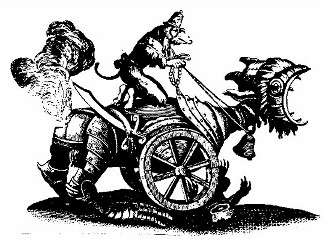
This must be one of the last checklists of this size to be made using only a typewriter rather than by computer sorting techniques. There is a glossary in the front explaining sf terms, and each of the entries by author gives the type of sf involved.
Curt Phillips recommended that I put Mr Day on the IGOTS mailing list, and we have had a little correspondence. Day inclosed updated versions of his Bibliography of Adventure (Burroughs, Haggard, Rohmer, and Mundy, rev.1988) and the very useful Checklist to the SF Magazines 1892-1992 - but I see there are no prices given on these. He also inclosed a pamphlet called Matter Radiation Space Gravity (1986) which I am not qualified to explain any further, and says he is working on a short novel.
The Paperbound Books checklist is also available at 3/$135, and I did get three, as I was sure Tom Cockcroft would want one. Bud Webster got the third, so if you want one, write Brad Day.
`There is nothing more unworthy of a civilized nation than to allow itself to
be ruled by a clique of irresponsible overlords dominated by sinister passions,
and to offer no resistance.'
Dying We Live edited by Gollwitzer, Kuhn, & Schneider, Seabury Press, New
York, 1968, 285pp, wraps, $2.75.
The quote is from the 1942 Pamphlet of the White Rose, published by the Munich Student Group - five of the members and their faculty advisor were all executed by the Nazis the following year. The book consists of the last letters to their friends and relatives of these dissidents to the Nazi regime and some fifty others.
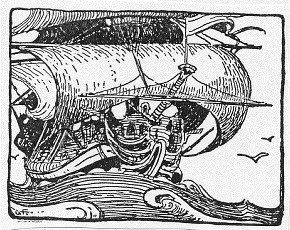
A friend at the office gave me a xerox of a column by a John C. Dvorak from the April 1994 issue of PC Computing - the `PC' here does not stand for politically correct. Dvorak reports on the asinine Senate bill SB#040194, introduced by Senator Patrick Leahy and sponsored by the ineffable twit Ted Kennedy, among others. The bill prohibits anyone from using a public computer network (and all nets that can be accessed by phone are apparently `public' for the purposes of this bill) while `intoxicated'; and makes discussing `sexual matters' on such a computer network a felony. See quote at head of previous item! One might think that since this bill was introduced on April 1st it is just a stupid joke, but apparently these idiots are serious.
Mae Strelkov writes that she got the Robert Jordan book that she asked
me to get her, the second in his Wheel of Time series - Mae is way out in
the boonies in Argentina and gets letters pretty well but packages tend to go
astray. I sent it registered, and have sent the third as well, and have the
fourth wrapped. I got a copy of the first volume for myself, and have made a
dent in its 814 pages:
The Eye of the World by Robert Jordan, Tor, New York, 1990, wraps, $5.99.
Owes perhaps a little too much to Tolkien's epic fantasy, but Jordan is a better writer
than Stephen King to my taste - verbose as he is, the material isn't as repetitive as
King's. Each of the volumes is as large as this first one, and the fourth may well not
be the last. By p.216 we have had something very like the Shire invaded by something very
like the Nazgul leading something very like Orcs - with something very like an
elven princess riding to the rescue and a Gandalfish roving entertainer lurking
in the background. Not to mention the hero getting hold of a magic sword and
setting off on a quest to save the world. There is an altogether different
treatment of religion however, and the Princess is an adept in a feminist cult...
The Hannes Bok Illustration Index by Cuyler W. Brooks Jr, Purple Mouth
Press, 1994 (revised from the 1970 and 1974 editions), 40pp, card covers.
I can hardly review this, but I did run off copies of what I had scanned into the
computer and typeset. It can now easily be corrected further; and if you are in
the DOS computer system (or the latest Macs, I am told, can read a DOS ascii
disk) and can stand the typesetting symbols, you could get it on disk. The card
covers are left over from the 1970 edition.
The original edition was for the old National Fantasy Fan Federation's Collector's
Bureau, and was credited to me and a Don Martin that I have long since lost track of.
Many other fans have helped with it over the years, especially Tom Cockcroft.
Speaking of which, Robert Whitaker Sirignano says that the Bok illo in IGOTS 11 is `too Bok-ish to be anything but a Bok'; and in fact Damon Knight kindly answered my query, saying that he did not do it.
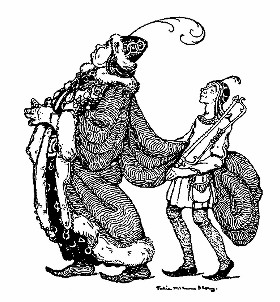
Terry Jeeves notes a visit to Hay-on-Wye, a village in England that has 26 bookshops - I don't think I could stand it... And what do we have in this metropolis of nearly half a million? Two WaldenBooks in malls a couple of miles apart and carrying the same stuff...
Roger Sheppard sends $10 for the Kirk's Works I sent him and says he plans to reprint a biography of Walter de la Mare. Roger also mentions a Locus ad for books to be read on a computer screen - I never could find this, but note entry above about Black Spirits & White and other books available on disk from Mark Owings.
Anti-Paedo-Rantism by Abel Morgan, pub. by Ben Franklin, Philadelphia,
1747, 160pp.
No, I don't have this, but I would buy it for a quarter... Alas, the estimate in the
Plandome Auctions catalog is $425-600. Some Washington DC fan put my name on the Plandome
mailing list over 20 years ago and they have never taken it off, even though I have never
bid on anything!
Years of Light by John Robert Colombo, Hounslow Press (124 Parkview
Avenue), Toronto, 1982, 195pp, wraps, illus b&w.
A very unusual piece of fan history, still available from the publisher after 12 years,
though I have lost the price, which isn't on the book. Lloyd Penney kindly gave me the
publisher's address and said he though the book was $10.75 + $5 p&h. I sent
them $16 and mentioned that I would like to have an extra copy for review and
they did send two copies.
The title refers to Light, a fanzine that Leslie A. Croutch, a Canadian fan, produced 114 issues of between 1941 and 1961. Included are a biography of Croutch, four stories he wrote, and illos from the zine, including an excellent one by Charles McNutt (who later changed his name to Charles Beaumont); also a facsimile of Light 20 from 1948.
Once Around The Bloch by Robert Bloch, Tor, New York, 1993, 416pp,
illus photos, index, $22.95
This is the unauthorized autobiography, with Bloch leering from the cover in front of
the `Psycho' house. I think I got it from Weinberg in Chicago, as it has laid in the
autograph sheet with a Virgil Finlay illo. Bloch was born in 1917 and knew a lot of the
Weird Tales crowd. A funny book but but not silly - except for the puns - and I
enjoyed it very much.
Alas, on September 24 I heard on the radio that Bob Bloch had died the day before.
God and Sex by Dean C. Dauw, Fort Dearborn Press (153 N. Dearborn,
Suite 1100, 60610), Chicago, 1993, 478pp, bibliography, $24.95.
A review copy of the first volume of an odd sort of trilogy in which the second two
volumes are said to be novels. A serious if eccentric assault on the nature of
reality, printed on archival paper in a rather large sans-serif font. I would
probably absorb the content better in the novel form - C. S. Lewis is about the
only writer on such matters that I can take straight.
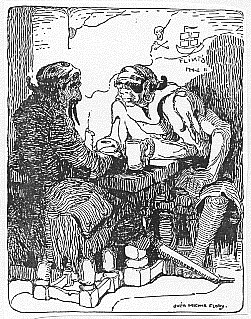
Alan Hutchinson of St Petersburg FL, who gets IGOTS through SFPA, kindly sent me ten boxes of the Nabisco Rye Triscuits in #12. My sister had gotten some in Coral Gables, so I suppose Florida is at least one place they are still distributed. Alan says he got them at a chain called Albertsons.
Wild Surmise is an anonymously edited zine that appears irregularly but is always very large (this latest 26th issue is 56 pages) and interesting. Most of this issue is about an attempt to trace the ancient Britons using both archeological and genetic evidence having to do with the Rh positive/negative factor in the blood. The address is Box 217, Largo FL 34649.
MacFarland Books, 116 N.Gilchrist Ave, Tampa FL 33606 (we seem to have hit a Florida cluster in the mail here) sends their 46th-anniversary catalog, 51 pages long. Very diverse stock.
MacFarland has a different system than most mail-order book operations - you order what you want but send no money until they invoice you. I remember a New England dealer who just sent the books and trusted you to pay for them - and he was in business for many years.
Between Dimensions V.1#2, edited by Greg Reeves (Box 1043, Bellaire MI
49615) came as a review copy - it's $2.50 or $14/6.
I had gotten a mail ad for it. Fifty pages long, needs more art. The cover is said to be
a computer-edited public-domain image - could have used better editing, the figure
looks deformed. And the large crowded san-serif text font is ugly. But on the
other hand the content - all reviews and commentary in the sf field - is very
well written and interesting. The only name I recognized was that of Mark Rich.
Seesik The Sailor and Trampo The Traveler (Second Book) by T. L.
Sappington, World Syndicate, Cleveland & New York, 1931, 191pp, illus. by
Milo Winter (2 color plates) and Leo Nowak (8 b&w).
Winter was a variable artist in my opinion, but I like this better than most of his other
work I have seen. Nowak I had never heard of, very art-deco but funny - a sort
of cartoon imitation of Maxfield Parrish. The eight stories are whimsical
fantasy, with the title characters appearing as narrators. The book was
apparently meant to be marketed as a juvenile - and yet the wit is somewhat
beyond sophomoric, and words like `promiscuous' appear freely. The paper,
unfortunately, is the thick pulp stuff that turns quite brown with time, except
for the color art, which is on coated stock.
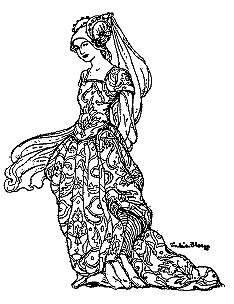
Alembic by Timothy d'Arch Smith, Dalkey Archive (Fairchild Hall/ISU),
1992, Normal (IL 61761), 226pp, $19.95.
Someone said I just had to read Timothy d'Arch Smith, so when his Alembic
turned up on a remainder list I sent for it, but it's pretty thick - alchemy and rock
music and all the characters a few bricks shy of a load. And yet, I did enjoy it enough
to read it all, once I got use to his style and the British milieu - a bit like one of
Charles Williams' fantasies. Smith is a British antiquarian bookseller and
collector and is said in the blurb to be writing a sequel. I will write to the
address given by Dalkey Archive and see if it's on the catalog they offer.
Futures Past edited by Jim Emerson (Box 610, Convoy OH 45832), 64pp each, $5 or 6/$20 - This saddle-bound pb is rather like a magazine in format, but the actual concept is unique. There are to be six per year, and the first four have been published. Each covers the sf and fantasy books, magazines, and movies from one year, starting with 1926 (chosen because that was the year that Hugo Gernsback started Amazing). These books are subtitled A Visual Guidebook to Science Fiction History, and indeed are extensively illustrated. But what will Jim do when he catches up with the present around the year 2006?
A Child's Life of Mary Baker Eddy by Ella H. Hay, Christian Science
Publishing Society, Boston, 1942, 120pp, photo. frontis and illus. by L.
Franklin van Zelm.
An odd production that once belonged to the Sunday School of the First Church of Christ,
Scientist in Arlington VA. The last two pages are taken up with line-by-line
acknowledgements of the use of material copyrighted by five other entities, something I
never saw before in a book. Hard to say what age child this was aimed at - it is
beautifully printed, but the illustrations are dull and lifeless and the style archaic for
the period.
A Treasury of Damon Runyon, Modern Library, 1950.
My niece is looking for a copy of this book for a gift. Runyon had passed away in
1946, and is mentioned in Mencken's The American Language as using the slang of
the 20s in his stories - which about exhausts my knowledge of this writer.
Roger Dobson asked me to see if I could get a copy of an article about Arthur Machen by Ben Hecht that appeared in the November 17, 1917 issue of the Chicago Daily News. Many old newspapers were microfilmed before they crumbled into dust, so I asked the Hecht biographer William MacAdams about this - it took him six months of nagging someone in Chicago, but in the end the answer was that no such article exists. MacAdams also mentioned that his biography of Hecht will be out in trade pb in the spring of 1995 from Barricade Books.
Ken Slater says he has sent me all the current Tanith Lee books - but of course by the time I got the letter she had probably written three more. He also explains how it was that Kipling wrote `...walk wide o' the Widow at Windsor / For 'arf of creation she owns' before there was a House of Windsor; and says that as late as the '40s he knew people who spoke like the characters in John Buchan's Witch Wood!
Mark Rich writes that he is in both the May and June issues of Analog; and Bud Webster called to say he has a story in the July issue - but I discovered that it is no longer possible to buy this magazine on the Peninsula! The only remaining `newstand' is Benders in Phoebus, and the two WaldenBooks have lots of magazines - but none of them have Analog. I told Campbell he shouldn't have changed the name from Astounding!
Dainis Bisenieks sends a photocopy showing that geas is in the OED after all - but they spell it geis, giving `gaysh' and `geas' as alternate spellings. Dainis also notes that Weird Tales is changing its name - I would have told Scithers not to do this, but after the experience with Campbell...
Steve Miller took time off from subduing his students to admit to a
weakness for the New Zealand comic strip Footrot Flats that he has been
getting in trades with Tom Cockcroft. He also incloses two zines he says are now
defunct:
Million #10, a British zine about popular fiction - I'm quite sure I have no
other zine that `features' Leslie Charteris, Elvis Presley, Nero Wolfe, and Rider
Haggard.
And Cthulhu, the comic - #1/3 by Millenium Publications, 1993. The interior art
is better than the garish cover, and the printing is far better than the average comic,
but most of the essence of Lovecraft is lost in the adaptation of the story, in my
opinion.
David Bates asked for biographical material on Judith Resnik, who died in the explosion of the Space Shuttle Challenger. I found about two pages of small print in Men and Women of Space by Douglas B. Hawthorne, Univelt, San Diego, in the NASA/Langley library at work.
The Truth About Your Height by Thomas T. Samaras, Tecolote (4918 Del
Monte Ave), San Diego (CA 92107), 1994 318pp, illus. diagrams, index,
bibliography, wraps, $24.95.
An exhaustive study of why we are the size we are, with a recommendation that we could
make better use of the Earth's resources by not being quite so large (he recommends 4-4.5
feet as a reasonable size), although he estimates that a 5-foot person will, on the
average, outlive a 6-foot person by 12 years. The 28-page section on `Exceptional People
of Smaller Size' does not mention Harlan Ellison. Samaras notes that he himself is
5'10".
John & Jan Haigis (7101 Grays Avenue, Philadelphia 19142) write that they liked IGOTS12 and my mention of their Groundhog Day Carol booklet that Dainis Bisenieks sent me, still available at the above address for $1.50. They inclose a leaflet explaining the Megalethoscope, a sort of 19th-century projector that reduced not only sphericity but refrangibility to a minimum - I didn't know they even had refrangibility back then... They ask `who is Dainis Bisenieks?' - such is fame...
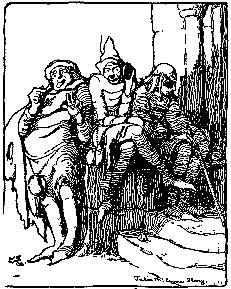
Rick Norwood, who sends tandem postcards (0.19+0.19>0.29) about me calling Superman `a Brooklyn epic' (Hickman says it should be `a Cleveland epic') in comparison to his calling Prince Valiant `an American epic', noting that The Iliad is not set in Greece and that we call The Devine Comedy an Italian epic rather than a Hellish epic - well, actually, I would call that a cowboy epic, but Rick probably meant The Divine Comedy...
If you think you understand the preceding paragraph, please have your head examined. Rick also wonders how I keep finding more old books to talk about - basically, it's a disease... He says that his want list is reduced to one hardcover (Asimov's The Shaping of England), one pb (Pohl's The Edge of the City), one magazine (Suspense, Winter'52), one TV show (Columbo's Murder By The Book), one radio show (the BBC's Titus Groan), one comic (Foxhole #2), and one audio tape (The Modern Folk Musicians) - `...breathes there a fan with soul so dead / Who never to himself hath said...' I'll get that book whether I need it or not!
The Fire Fly 24, Jane Kirby & Jon Lurie, 700 Pearl Street, Wallace ID 83873, explains in ghastly detail the abuse of a 14-year-old Lakota Indian boy, Tony Rios, in the South Dakota State Penitentiary - I saw this as a reprint in Ernest Mann's Little Free Press. Ernest blames this abominable miscarriage of justice on the `profit system' in our society, but I find it hard to imagine who profits from such abuses - other than the criminal justice industry.
New York City Folklore by B. A. Botkin, Random House, New York, 1956,
492pp, illus. photos and cuts, index, $5.
Con games and characters and catastrophes... Did you know the plans for the Empire State
Building were announced only two months before the 1929 stock market crash? And that it
weighs less (only 365,000 tons) than the dirt and rock excavated for its foundation?
Most of the text was assembled from earlier books and magazines, which are acknowledged in footnotes at the start of the entry. The illustrations are listed and their sources given at the front.
The Ides of Tomorrow edited by Terry Shaw, Little Brown & Co.,
Boston, 1976, 229pp.
Nine original sf tales of horror, none of them quite as good as Cyril Kornbluth's The
Words of Guru but getting close, especially George R. R. Martin's In The House of
the Worm and Robert Bloch's The Head.
Copper Star edited by Bruce D. Arthurs, World Fantasy Convention,
Tucson AZ, 1991, 221pp, illus.
A boxed edition anthology produced for the members of the 1991 World Fantasy Convention
and signed by the authors and artists. I got one of the extra copies through a dealer -
only 300 of these were made. Great art by Fabian and Freas and Harry Morris and the rest
of it is pretty good too.
Irrational Numbers by David Langford, Necronomicon Press (Box 1304),
West Warwick (RI 02893), 34pp, illus. Jason Eckhardt, wraps, $5.95.
I can't resist anything mathematical and I like Eckhardt's artwork too. Three tales that
can only be called Lovecraftian cyberpunk.
Expat World (Box 1341, Raffles City, Singapore 9117) has a sort of ad in a sort of zine called EW about which I know nothing more because I have only a single xeroxed page of it. This ad claims that a US Green Card can be legally bought for a million dollars but they can get you one for only $75,000... The mind boggles.
Vultures of the Void by Phil Harbottle and Steve Holland is offered by Zardoz Books at 13.95 (sterling) - this is a history of British sf publishing 1946-1956. I would like to have it, and since Zardoz says they want to buy old pbs, have offered them a selection in trade - we will see.
Star Destroyer by M. A. Bramstrup, Larsen Press, Woodstock N.B., 1981,
169pp, illus. by Owen Oulton, wraps.
I think the N.B. is for New Brunswick, a province of Canada. The blurb on the back
indicates that this is the second novel about Ms Bramstrup's hero Paul Danes - and this is
a second edition. The cover is b&w and bears no price, and the book is the same size
as a mass-market pb but on better paper. The art is competent but not great. The
story is written in what I might call `garbage pizza' style - it isn't just
post-holocaust or super-science or aliens from beyond the stars or teleportation
or death rays, it's got them all. On every page, except pp.125 and 126, which
are blank, in the form of terminally turgid dialog and indigestible expository
lumps... I will stick it on the shelf next to Queen Kong and The
Clones - even the worst can serve as a bad example.
Speaking of Bad Examples, Bud Webster was down from Richmond to do research
in my untidy collection of references for his index of first appearances in the
sf field. Note that the Bramstrup book is a second novel - what was the first?
Does Canada have any place to look up any book ever published there? Bud brought
me three books and took away the third copy of the Day index mentioned above -
weightwise he is ahead, in shelf space I am about even... The three very
different books he brought were:
The Model by Robert Aickman, Arbor House, New York, 1987, 138 pp, $14.95.
And a beautiful d/w too. Aickman died in 1981 and Kirby McCauley seems to be his literary
executor. This short novel was among his manuscripts. No mention of whether there was a
British edition, although Aickman lived in London. Most of his books were short-story
collections - I had just read Painted Devils.
This novel can be read very quickly as long as you don't stop to worry about what you think it means. The title refers to a model opera house built by a 19-century Russian teenager who wants to be a ballerina. Most of the characters seem to be a few cards shy of a full deck, as is common with Aickman, and the locale is beautifully described - whether life in the far boonies before the Revolution in Holy Russia was actually like that, I couldn't say! I enjoyed the story, though perhaps not as much as his short stories.
The Man From M.A.L.I.C.E. by David Levine, Dutton, New York, 1966, 120pp,
illus., $4.95.
This is a collection of over 200 caricatures of literary, theater, and political figures
that originally appeared mostly in The New York Review of Books and Esquire.
The style reminds me a bit of Mervyn Peake, but whereas Peake often found something
attractive in his subjects, Levine's are treated mostly as bad examples - the only
expection I see being a full-page drawing of Alexander Pushkin.
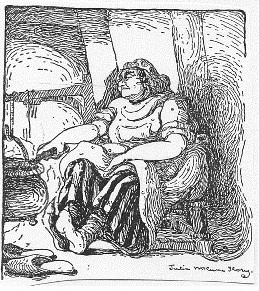
Why The Mohole by William J. Cromie, Little Brown, Boston, 1964, 230pp,
illus. photos and diagrams, index, bibliography, $4.75.
This is a detailed explanation for the layman - perhaps even for the highschool student
of the time - of the Mohole Project, an attempt to drill through the crust of the Earth
and take samples from the `mantle', the next layer down that was thought to be about
1800 miles thick. Not only the technical but also the philosophical and
financial aspects of the project are clearly explained.
The book ends with the success of the pilot project (Phase I) in April 1961 - I must admit that I have no idea whether things were ever carried any further. The name `Mohole' has nothing to do with the length of the hole - the boundary between the crust and the mantle is called the `Moho' as an abbreviation for Mohorovicic Discontinuity, named for the Yugoslavian scientist who discovered it in 1909.
When I had dinner at a local Chinese restaurant with Bud Webster and his rich
girlfriend Mary and local sf luminaries Kip Williams, Cathy Doyle, and a third
HaRoSFAn called `Gecko', one of the ladies gave me a tract she had found posted
on her car:
Proclaim Liberty, Hand to Hand Combat Ministries, Box 77, Lebanon OH 45065, 4pp,
illus.
This has also been rubber-stamped by someone (the top line is off the paper edge) with an
address in Chesterfield VA. Most of the text is quoted from the Constitution, the writings
of early American statesmen, and the 1611 King James translation of the Bible (said here
to be the `Word of God'). The point seems to be that the interpretation of scripture by
this particular sect always supercedes statute law (though there is no mention
of what particular laws they object to), and if you don't agree (to judge from
their rather pugnacious name), they will pummel you until you do.
An ancient and perhaps undecidable controversy - to what extent is individual conscience subject to the will of the majority? I would allow that the First Amendment protection of freedom of the press does supercede local ordinances on littering - that is, a parked car is `public' enough that no one should get too bent out of shape over such literature being left under the windshield-wiper. At least as long as the windshield-wiper is not bent out of shape...
The Anatomy of Criminal Justice by John W. Poulos, Foundation Press,
Mineola NY, 1976, 1288pp, illus. photos and diagrams, index.
This curious sociological production describes in tedious and exhaustive detail the
processing of one individual by our criminal justice industry. Even though it is
stated at the outset that `all names, places, and dates have been changed' to
protect the privacy of the participants, the text is full of what appear to be
facsimile documents with signatures, both typed and hand-written! And the
photographs seems to be real rather than staged - the eyes of human figures are
blacked out, but vehicle licenses are legible.
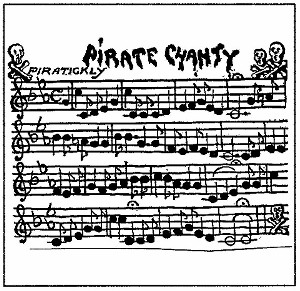
The crimes involved are quite typical as compared to newspaper accounts I have read - three minor drug user/dealers meet at a house, one of them shoots the other (wounding him slightly) through a wall (in a manner that is not clearly accidental nor logically intentional); after which the other two take him to a hospital and drive off in his car. During the short drive, the third man shoots and kills the first gunman, with no clear motive other than possibly self-defense. This third man, the only non-white in the plot, is arrested and convicted of manslaughter, and the book follows both his prison career and his appeals of the conviction.
If I had been on the jury, I would have voted to acquit on the grounds of self-defense - but what a dent this would have made in the income of the appeals lawyers!
The Fiction of L. Ron Hubbard by William J. Widder, Bridge
Publications, np, 1994, 373pp, illus. photos, indices, bibliography.
This 1 1/2-inch thick quarto, apparently issued without d/w, came to me as a review
copy and seems to lack any clue as to the price - if I decode the barcode block
correctly, it is $50. Certainly an exhaustive reference, it seems to list almost
everything Hubbard ever wrote three ways from Sunday. Photos of the books and
magazines appear almost as extensively as photos of Hubbard himself. There is a
16-page section in full color. In addition to lists of published books, stories,
articles, poems, and screenplays, and recordings, there are detailed lists of
unpublished material, some of it noted as for future release.
An unusual feature of this bibliography is the section devoted to quotes from reviews of Hubbard's work. These are all favorable reviews, and the only fanzines referenced are a handful from the late 40s and early 50s.
There is a list of Hubbard's many pseudonyms, the best-known being `Rene Lafayette' and the silliest `Winchester Remington Colt'. There is a list of all the organizations Hubbard ever belonged to. There is a reproduction of his PhD diploma from Moscow State University, in both Russian and English.
Most interesting to me of the quotes from Hubbard himself is his explanation as to why he wrote Battlefield Earth - he had nothing better to do at the time!
Poor Things by Alasdair Gray, Harcourt Brace Jovanovich, New York,
1992, 319pp, illus., $21.95.
A wonderful fantasy in the Frankenstein tradition, set in Glasgow in the early part of
the century and illustrated by the author and with old medical engravings. The binding is
apparently also designed by the author and resembles the beautiful bindings of that period
by Beardsley or William Morris.
This would be worth having as a curiosity - but it is also beautifully written and a pleasure to read.
Immortal Village by Donald Culross Peattie, Univ. of Chicago Press,
Chicago, 1945, 201pp, woodblocks by Paul Landacre.
A very interesting informal history of Vence, written in 1929 while the author was living
in that part of Provence. It attempts to trace the development of the region from
prehistory through the modern era. The frontispiece shows a medieval military
technique I had not heard of - the defenders of a walled city have suspended a
sort of shield from ropes to absorb the blows of the attackers' battering ram.
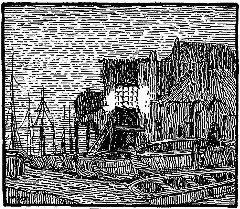
Up In The Old Hotel by Joseph Mitchell, Vintage/Random House, New
York, 1993, 716pp, wraps, $14.
This trade pb is an omnibus of four previous books, mostly material that originally
appeared in New Yorker - McSorley's Wonderful Saloon (1943), Old Mr
Flood (1948), The Bottom of the Harbor (1960), and Joe Gould's Secret
(1965). My sister showed to me and I read it while in Atlanta in late August. Each essay
(there are also a few fiction pieces) is about a character or area or activity in the
New York area. At least one relates to a book previously mentioned here - it
turns out that the George S. Schuyler whose books Black No More and
Black Empire were in It Goes On The Shelf 10 had a daughter
Philippa who was a child prodigy and Mitchell interviewed her for the New
Yorker.
I was particularly interested in the last part of the book which is about Joe Gould, because it relates to an old controversy in the Southern Fandom Press Alliance. In 1967, the official editor of SFPA threw a young fan off the waiting list because he had allegedly plagiarized Mark Clifton's The Dread Tomato Addiction from the February 1958 issue of Astounding. I thought at the time (and still do) that the editor's actions was unfair - Steve Patt's On Tomatoes is only generally similar to the Clifton piece. Patt might well have heard an unattributed account of the `tomatoes are poisonous' joke at a party and was given no chance to defend himself. In Mitchell's account of the long-time Greenwich Village character Joe Gould (Mitchell met him in 1932 and he died in 1957), he includes mention of The Dread Tomato Habit that appears in several of Gould's `Oral History of the World' notebooks - as with the Mark Clifton piece (published a year after Gould died), it uses fake statistics as part of the gag as well as having almost the same title. Is this the origin of the `tomatoes are poisonous' joke, which in all three pieces is used to make fun of the misuse of statistics? Or did Gould get the idea from an even earlier source?
The original purpose of Joe Gould's `Oral History of the World', that he wanted to preserve the daily conversation of common people, is also a key element in the first part of one of my favorite novels, Rachel Maddux's The Green Kingdom (1957), where her character Arthur Herrick plans a vast compilation that he calls The Human Records. In both cases the impossible task fails - when Joe Gould died, all that could be found of the `Oral History of the World', that he claimed ran to over nine million words, were a few copybooks with the same essays written over and over in slightly different form. Mitchell actually saw and mentions the one about tomatoes and another about Gould's father.
Joe Gould also claimed to have translated Longfellow's Hiawatha into `seagull' and would recite the resultant cacophony for a drink or a free meal - this is the sort of detail that makes the Mitchell book such fun to read.
Frightful Plays! by Charles S. Brooks, Harcourt Brace, New York, 1922,
214 pp, illus by Julia McCune Flory.
An earlier book than his 1931 Prologue mentioned in the previous issue, but bound
to match and with the same artist. I was looking for something else and discovered it on a
high shelf! Charles Brooks (no relation that I know of) was a busy fellow, and produced 12
volumes of essays, plays, and a novel between 1915 and 1931. I would certainly
like to see any of the others, especially if they are illustrated by Flory.
The main attraction for me in this book is the Flory art. The plays themselves, Wappin' Wharf and At the Sign of the Greedy Pig, are about pirates and beggars respectively and I find them impenetrably cute and saccharine. Wappin' Wharf was produced in Cleveland in 1922, and Flory designed the sets and costumes, so this gives a clue as to the most likely home of Brooks and Flory - perhaps someone in the Cleveland area will run across more of these books.
The Haggis by Alexander MacLean, Northern Books/Famedram (Box 3,
Ellon, AB41 9EA), Scotland, nd, 32pp, illus by Mairi Hedderwick, 2.50
(sterling).
Andy Andrushak sent this educational pamphlet that he acquired on a recent visit to the
Highlands. It explains how the ancient Scots and Picts used the now-extinct Haggis Hound
to flush that wily beast from its hiding place in the heather, and that the only
long-haired variant, the Brindle Haggis of Mull, is the most ferocious. Full and
remarkable details are also given on the sex life and bathing ritual of the haggis, and
its symbiotic relationship with the Haggis Bird. Environmentalists will be happy to hear
that the haggis is in no way an endangered species.

The Perfect World by Ella Scrymsour, Everleigh Nash & Grayson,
1920.
Vincent Clarke sends his review of this candidate for Worst SF Novel
that originally appeared in Terry Hill's fanzine Microwave. What with the
purple midget High Priestess with long golden hair, the dehydrated water, and
the Monarchial Communism on Jupiter, it certainly sounds like a prime contender
- Vince promises to send me a worm-eaten reading copy. The worms probably died
laughing!
Nor The Years Condemn by John Berry, Arthur Thomson, and Bob Shaw,
Guineapig Press, Stourbridge (England), 1994, 58pp, illus by ATom and others.
Ken Cheslin sent me this 3rd volume of the limited edition (125) of reprints
of the Bleary Eyes stories about the Goon Detective Agency from the
1950s. Hilarious nonsense, and the art by the legendary Arthur Thomson is
wonderful.
Prince of Darkness edited by Gerald Verner, Westhouse, London, 1946,
250pp, period illustrations, 8s 6d.
This witchcraft and sorcery anthology includes pieces by Saki, Dorothy Sayers, Algernon
Blackwood, John Buchan, Montague Summers, and others. I found it in an antique mall in
Birmingham in August during the annual DeepSouthCon. It was probably overpriced at $20
even though it has the remnants of its d/w, but I couldn't resist the combination of
subject matter, the 17th-century artwork (which is well-printed and perfectly
legal to reprint), and the Hannes Bok bookplate.
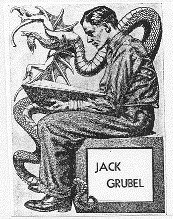
The bookplate, which shows a seated man reading a large book in the company of a winged serpent, indicates that the book once belonged to Jack Grubel. The design is not one of the five currently listed in my Hannes Bok Illustration Index as done by Shasta Press, Fantasy Press, and Unknown Press, so I would appreciate any further data on its source.
Bosh Goes South by Bob Shaw, Charlotte Proctor (8325 7th Ave South),
Birmingham AL, 1994, 39 pp, illus by Shaw, Wade Gilbreath, Cindy Riley, Charlie
Williams, and Taral Wayne, wraps, $5.
Charlotte made 100 of this great collection of Shaw's fannish wit in honor of his being
GoH at this year's DeepSouthCon and there might be some left. There is also a piece by
Walt Willis explaining how Shaw came to enter fandom.
From Unknown Worlds edited by John W. Campbell Jr, Atlas, London,
1952, 124pp, illus by Edd Cartier.
This tiny anthology found in a flea market in North Carolina has, oddly enough, a novel,
two novelettes, ten stories, and four poems, all illustrated by Edd Cartier, one of the
best of the pulp artists. The d/w is missing, unfortunately. The pages appear to be as from
the magazine Unknown Worlds (and on equally bad paper) but the pagination
is sequential. There is a notice that the book appeared in the US in 1948.
This pulp was known for a distinctive type of humorous sf - permanently linked in my mind with Cartier's art - where larger-than-life characters and snappy dialog were more important than plot or content. The July 1994 Analog has an excellent current example by Bud Webster, a Richmond fan who, oddly enough, looks rather like a Cartier illo - Bubba Pritchert and the Space Aliens. Bud says there is to be a another Bubba Pritchert story in Analog.
Unfortunately, Analog these days - to judge by this issue - has neither much else worth reading nor any artists who could hold a candle to Cartier.
Adventures To Come edited by J(oseph) Berg Esenwein, McLoughlin Bros.,
Springfield MA, 1937, 187pp, illus, $0.50.
I don't actually have this, but Bud Webster found a copy with some of its d/w recently.
Tuck says that it may be the first sf anthology, but also notes that it seem to be a
juvenile. Does anyone know if it is, in fact, a true anthology? None of the authors listed
seem to appear anywhere else, and Bud says there is a similarity in the style that
makes him suspect that Esenwein may have written the whole thing himself.
Ladies and Legends by Stephen Fabian, Underwood/Miller, Novato CA
& Lancaster PA, 1993, 136pp, wraps, $14.95.
I am not all that taken with the color cover on this book, but the b&w interior
plates are magnificent. These are mostly collected from books and artfolios of the last
20 years, including five from my own Arthur Machen collection Guinevere and
Lancelot, plus a few previously unpublished pieces. Underwood and Miller
have now parted company and are publishing separately, but they produced many
beautiful books during their partnership. This one is also available in
hardcover at $24.95.
The Night Land by William Hope Hodgson, Ballantine, New York, 1972, in
two volumes, 244/243 pp, wraps, $1.25 each.
These were in the Adult Fantasy series edited by the late Lin Carter and first appeared
in London in 1912. I must admit that I have never actually read them, having been
intimidated by the struggle with Hodgson's House On The Borderland. Now I will
have to try again, as Dave Hall has sent me his 40-page condensation - with maps (see
inside back cover), something the original sadly lacked. Stay tuned...
The Magic Ink-Pot by the Marchioness of Londonderry, Macmillan, London, 1928,
209pp, illus in color by Edmund Brock and in line by Lady Margaret Stewart.
These are traditional Celtic tales that the author sent to her daughter Margaret (the
artist) in letters. They were later assembled into the book with the color plates by
Brock, with a linking device of the Magic Ink-Pot. The line art by Lady Margaret rather
reminds me of Ken Cheslin's `Olaf' cartoons! Brock's drawing is not, to my mind, quite up
there with Rackham or Robinson, but his colors are wonderful.

The Book on the Edge of Forever by Christopher Priest, Fantagraphics,
Seattle, 1994, 56pp, cover by Drew Friedman, wraps, $6.95.
This `Enquiry into the the Non-Appearance of Harlan Ellison's The Last Dangerous
Visions' is an updated reprint from the 1987 fanzine Deadloss and
celebrates the 20th anniversary of the non-appearance of the famous anthology,
which apparently would have run somewhere between 500,000 and a million words
and was to have 75 full-page illustrations by Tim Kirk.
Priest, who was not one of the contributors (23 of them have died since the book was announced), undertook this detailed investigation into the matter in hopes of forcing some resolution. The text contains extensive quotations from Ellison himself, and letters from many of the authors who contributed to the proposed anthology.
Unveiling a Parallel by Alice Ilgenfritz Jones and Ella Merchant,
Syracuse University Press, Syracuse NY, 1991, xlv/158pp, wraps.
I cannot make out the price, but I got it for about $2 from a WaldenBooks remainder
table. The authors lived in Cedar Rapids, Iowa, and the book was originally
published in 1893 by Arena. Alas, it is far too tedious to actually read much of
- the endless description of the `Marsian' (I wonder who decided that `Martian'
was more suitable - George du Maurier's The Martian was still four years
in the future) utopia by a hero who doesn't even have a name palls very rapidly.
Caroline Mullan of Intersection, the 53rd SF WorldCon to be held next year in Glasgow, Scotland, complains that I quote their PRs with regard to VAT and Customs obstacles, rather than the Dealers Packet she says they sent me - but surely the average fan who might want to be a dealer would read the PRs first! The current situation (but the government is still debating further bills) seems to be that there is no VAT on books but there could be a 6% duty on books for resale although they `normally don't bother with charging duty on small quantities of books'.
Like the ConAdians, the fans in Scotland are at the mercy of the legislators and bureaucrats - but at least I was able to get an answer out of Glasgow, which is more than I can say of Winnipeg, where I am reliably informed that the Dealer Room manager was specifically instructed by the Committee not to answer my letters.
The Black Baron by Tennille Dix, Bobbs Merrill, Indianapolis, 1930,
350pp, period illus and photos, index.
Chester Cuthbert sent me this book about Gilles de Rais, the 15th-century French nobleman
who was a companion of Joanne of Arc but was later executed for satanic child abuse and is
said to have inspired the Bluebeard legend. He has inspired a number of books over the
years. This one seems to be what I might call semi-novelized, in that
descriptions and conversations are given that could not be known that precisely
after 500 years.
I am certainly no expert on the Joanne of Arc story, but I have read several books about her and this is the first account I remember seeing of an incident where Joanne (mounted in full armor) attempts to ride down and slay a `harlot' with the `miraculous sword of the Church of St Catherine de Fierbois' - and the sword breaks in her hand, leaving the woman unharmed. Or perhaps she merely meant to strike the woman with the flat of the sword. Gilles watches this and rides away bemused...
The Baron de Rais was one of the richest nobles in France, and almost an absolute monarch in his own barony under the feudal laws. According to this account he had murdered a number of children even before the appearance of Joanne of Arc - such murders were a recurring obsession with him, but only became sacrifices at a satanic mass long after the death of Joanne.
De Rais spent most of his enormous fortune on the hiring of alchemists and other wizards, and on the staging of elaborate plays. The most expensive was a traveling show based on the relief of the siege of Orleans by Joanne and himself; and the last was his own trial and execution, at the age of 36. He confessed to both the satanic rites and the murders and was hanged over a fire, but his body was taken down before it burned and buried on the spot (an island in the Loire near Nantes). A shrine was erected there and became the object of pilgrimages by barren women!
Arthur Machen & Montgomery Evans: Letters of Literary Friendship
1923-1947 edited by Sue Strong Hassler & Donald M. Hassler, Kent State
University Press, Kent OH and London, 1994, 195pp, illus photos, bibliography,
index, $26.
Evans was a wealthy young graduate of Yale who met Machen through Vincent Starrett. This
book was possible because he kept all of the Machen letters and had them professionally
bound - it would read better if he had included copies of his own letters to Machen! But
this is fascinating stuff - in a 1943 letter Machen mentions gremlins as a `recent
fantasy of airmen'. And there are four pages of notes, never previously published, that
Machen inscribed on the flyleaves of Evans' copy of the Caerleon Edition of his
books, with allusions to Poe, Dickens, Twain, Newton, and Einstein.
Fade by Robert Cormier, Delacorte, New York, 1988, 310pp, $15.95.
A wonderfully spooky novel about a boy who inherits the ability to `fade',
that is, become invisible, at will. The blurb by Stephen King compares it to
what might happen if Holden Caulfield had been the hero of The Invisible
Man, but Cormier is a better writer to my mind than Salinger or Wells or
King himself.
Muse in Torment by Alex Mezey, Book Guild, Sussex (England), 1994,
328pp, index, extensive bibliography, 12.95.
Ray Russell sent me this weighty tome by a Harley Street psychiatrist. It is an
investigation into the question of why the best creative writers seem to generally run a
few bricks shy of a load, to use the technical term. Unfortunately, except for Coleridge
and Poe, I have little familiarity with the works of most of these writers, so an
analysis of their mental condition does not mean a great deal to me. C. S. Lewis
appears in the index, but only from a table of writers who lost one or both
parents in childhood. Another table lists writers who committed suicide, and the
method they used.
All in all, the book seems long on analysis and short on conclusions - and in any case, what is the point? If the Dr Mezeys could identify the Poes among us and cure them early, perhaps the Poes would be happier - but what would the rest of us do for something to read? See Ursula LeGuin's Those Who Walk Away From Omelas.
Ray Russell, who runs the Tartarus Press (5 Birch Terrace, Hangingbirch Lane,
Horam, East Sussex, TN21 0PA, England) also sent his catalog, which lists some
books I have already gotten from him and three more that I can't resist:
The Secret of the Sangraal and Other Writings by Arthur Machen, 250
copies, 22.50 (prices in sterling include postage).
Edgar Allan Poe and Arthur Machen by Machen, Mark Samuels, and Russell himself,
100 copies, 4.50.
Under the Leads by Arthur Machen, 100 copies, 4.50 - a retelling of an episode
from the career of Casanova, no doubt arising from Machen's having translated Casanova's
autobiography.
Russell notes that he cannot accept dollar checks because of the exorbitant bank conversion rates there. I don't know how bad they are, but it isn't cheap from this end either - I paid for the three books I wanted by International Postal Money Order, and found that the USPS charges 15% to convert your money and send it to England. That is, the 31.50 sterling for the books converts to $50, and I had to pay $57.50 for the money order.
The Sky's The Limit by Richard W. DeHaven, MayaLand Press (Box 1260),
Davis (CA), 239pp, $13.
The subtitle on this review copy trade pb is `How to guarantee your child's success...and
your own, too'. It has a cutesy-poo faked cover photo showing three people trying to
climb a pile of giant books. Just another paper-wasting abuse of language from LaLa-Land,
I thought - but actually, this book might be of some use beyond swatting roaches. It
addresses the common problems of diet, discipline, education and so on in plain English
with some thought behind it. On the other hand, anyone capable of understanding
it might have already thought of most of it for himself...
ReverbStorm 2 & 3 by Dave Britton, Savoy Books (279 Deansgate),
Manchester (England), 56pp each, art by John Coulthart, wraps, 3.50 (sterling) each.
These are parts 2 and 3 of 8 (the first one was reviewed above), but
also #9 and #10 of the Lord Horror series - I hope that's all clear. I
have long thought that the best art was produced, as it were, under compulsion.
That is, it was something in the artist that had to be expressed, by whatever
means - this is what Rachel Maddux said about her magnificent fantasy The
Green Kingdom. But I cannot tell whether the compulsion here is artistic or
financial... The art is spectacular, but the content is gruesome (to say the
least) - and to what purpose? Nihilism is a valid viewpoint, but why does it
sell well enough to pay for this expensive production at a relatively modest
price?
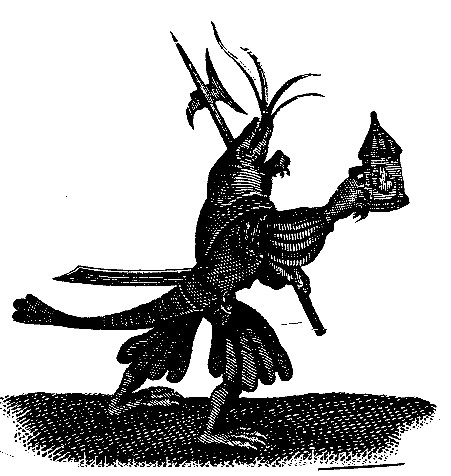
We also heard from:
ADVO, who asks if I have seen a missing child named Shanythia Mashelle
Greene - this 18-year old `child' was 6'2" and weighed 200 lbs at the time she
disappeared from Pompano Beach FL!
David Bates, who tried to help me track down the Canadian editions of old pulps
with Bok illustrations.
Su Bates, who notes a theory that the similarly weird figures in paintings by
Hieronymus Bosch and Jan Van Eyck are supposed to be victims of the ergot
poisoning mentioned last time. Su also sends photocopies about geas
noting the alternate spelling geis and that the plural geasa is
pronounced `gaysha'.
Ruth Berman, who thinks that the Scots dialect in Buchan's Witch Wood was a
standardized spelling of what he had actually heard himself.
Dainis Bisenieks, who explains that a letter returned from Kiev as unclaimed is
marked up in French because that is the official language of the Universal Postal Union.
Dainis also notes that Weird Tales is changing its name to `Worlds of Fantasy &
Horror' or somesuch.
Vincent Clarke, who somehow fell off the mailing list after #2. He
explains that The Bleary Eyes is xerox not mimeo; and reminds me of the
typewriter material in Rupert Gould's Stargazer Talks.
Tom Cockcroft, who sends photocopies proving (to my eye at any rate) that Virgil
Finlay lifted some of his grotesque faces directly from drawings by Norman
Lindsay.
Leigh Edmonds, whose copy of #11 (but not #12) was returned by the PO - anybody
know where he is?
George Flynn, who mentions the geas/geis business and also says that
Tolkien invented the dwarves plural of dwarf - the OED however, while it
avoids any discussion of the proper plural of dwarf, does reference an 1818
History of Laurin, King of the Dwarves under the first definition of
dwarf.
Richard Geis, who advised in August that he was returning his fanzine The Geis
Letter to the sf fold and wanted to trade again, but in September sent two
form letters saying that #23 was probably the last issue... But maybe not...
Bruce Gillespie, who says he originally meant his massive (the latest
one is 120pp of small print) Metaphysical Review to be something more
like IGOTS but he got carried away... Bruce also notes a COA from the PO Box to
his actual house address: 59 Keele Street, Collingwood, Vic.3066, Australia.
Mark Harris has relocated himself, ReDiscoveries and 350 boxes
of books to Passaic NJ (44 Howard Ave, 07055) and says he will have a new issue
out soon.
Marty Helgesen, who says that Radio Free Thulcandra is not dead but
sleepeth while he gets organized...
Lynn Hickman, who sends a page with 36 daffynitions from Hillary's medical
dictionary, puns too ghastly to repeat!
John Howard, who liked the Julia McCune Flory art and asks who she was - alas, I
know nothing more about her. Also notes a COA to St.Chad's Vicarage, LimeGreen Road,
Limeside, Oldham OL8 3NG, England.
Ben Indick, who says he got the Parrish Knave of Hearts
mentioned in #12 and likes it.
Alia Saquipova Kabidenovna in Cuba, using a stamp that is a commemorative of the
1936 Rocket Mail First Day Cover. She asks for a copy of IGOTS, which I sent.
Dave McClintock, who says he is sinking into the past with the aid of books like
Ligotti's Noctuary.
Michael McKenny, who confirms that youse is Irish - he heard it in the
Ottawa Valley, which had its own dialect influenced by the mostly Irish settlers. Mike
also mentions Thomas Blanket, for whom the bed cover was named according to Thomas
Costain's The Three Edwards - the Marvelous Monikers reviewed in #12 says it
was the other way around. Michael also says that he reads his 5-year-old Sax Rohmer and
Bram Stoker - maybe there will be another generation of fans!
Murray Moore, who is planning to start his own zine and also likes the Flory
artwork; and says he will look to see if there are any Rye Trisquits up in Ontario.
Harry Morris, who says that he was still able to get the `Grain and Salt Soc.'
edition of Harry Mortensen's Monsters and Madonnas (reviewed in IGOTS
several years ago) from them for $40.
Frances Needham, who sends a COA.
Steve Nelson, who sent an excellent ghost story for me to read -
it may appear in Rosemary Pardoe's Ghost Story Society fanzine All
Hallows.
Marc Ortlieb, who sent the first seven issues of the Australian Science
Fiction Bullsheet.
Jack Palmer, also known as Rudi Rubberoid and Edward R. Gonzo, who complains
about my spelling of `i before e' words and sends a full-page typewriter ad from a
1948 Saturday Evening Post. It shows the `new all-purpose Remington Electric
DeLuxe' model made by Remington Rand. They use a `75th Anniversary' logo based on the
first typewriter being dated 1873 - but don't mention that it was not a Remington but
a Sholes & Glidden. I have the 1948 electric in my collection - it weighs
over 50 lbs and has a bulgy design rather like a 1950 Ford.
Curt Phillips, who sends 4 pages of handrot and says he got an 11th edition
Britannica from his local library for $5 - and they sold the set to him
by mistake, they had meant to throw it away as being of no interest! Curt says
he now looks like the William Brooks picture on the back of IGOTS 12 (he does
Civil War reenactments); and notes a COA to Zip 24211.
Tony Pizzini, who says he now has an Apple IIe - no excuse for not doing a fanzine
now!
Roger Reus, who says the second issue of The Stylus will be
out in June - and it was.
Mark Rich, who notes that there are two Bokish illos by Damon Knight in Knight's
The Futurians (pp.167 & 168) - I don't think they look as Bokish as the Bok
illo we thought might be by Knight instead. Mark has now gotten interested in Cyril
Kornbluth and started a fanzine called Kornblume aimed at getting more information
about him. Mark sent me a list of 16 Kornbluth pseudonyms from various sources, and I
added a possible 17th!
Ed Ripp, the Chicago book dealer, who says he likes the Julia McCune Flory art in
IGOTS 12 but can't find anything on her - I thought she might be a Chicago artist.
Langley Searles, who wanted details on the 1967 Wollheim book Operation:
Phantasy.
Ginny Singer sends a final small combined issue of The Village iDiot and
The Printer's Devil done as a memorial to her late brother Joe Singer,
the long-time editor of those titles.
Steve Sneyd, who quotes someone whose name is lost in the handrot on the question
of dialect - a dialect is a language without an army. Steve is pursuing the origin
of the verb kipple...
Dale Speirs, among others, says that the reason Russian postal clerks write French
notices on letters is that French is the official language of the Universal Postal Union -
well, how else could they bugger things up even worse than the USPS? I like that
Universal - perhaps they are looking forward to the time when we will get
fanzines from Venus and from Mars / and someday from the stars, in the words of
the old filksong.
Mae Strelkov, who sends a 14pp explanation of the `Hand of Glory', going all the
way back to ancient Chinese Oracle Bones. In September Mae wrote that she has gotten the
V.2, 3, and 4 of Robert Jordan's Wheel of Time books - I have seen a mention
somewhere of at least two further titles in the series.
Harry Turner, who sends some striking artwork (doesn't say if it's for
publication) and explains all about his flying houseplant, the maranta leuconeura.
In a later missive, he goes into the mystery of the Malevich Romanov, a philatelic
conundrum far too esoteric to go into here. Harry also explains how he was once arrested
for rocketry.
Mark Valentine, who has moved to 40 Ash Grove, Ilkley, West Yorkshire, gotten
engaged, and turned in his book about Arthur Machen - look forward to seeing it.
Ray Zorn, who says that he has had to dispose of most of his collection and move
into a nursing home - he has collections of Donn Byrne and Eric Linklater on
consignment with a local dealer in Berne IN, if anyone is interested.